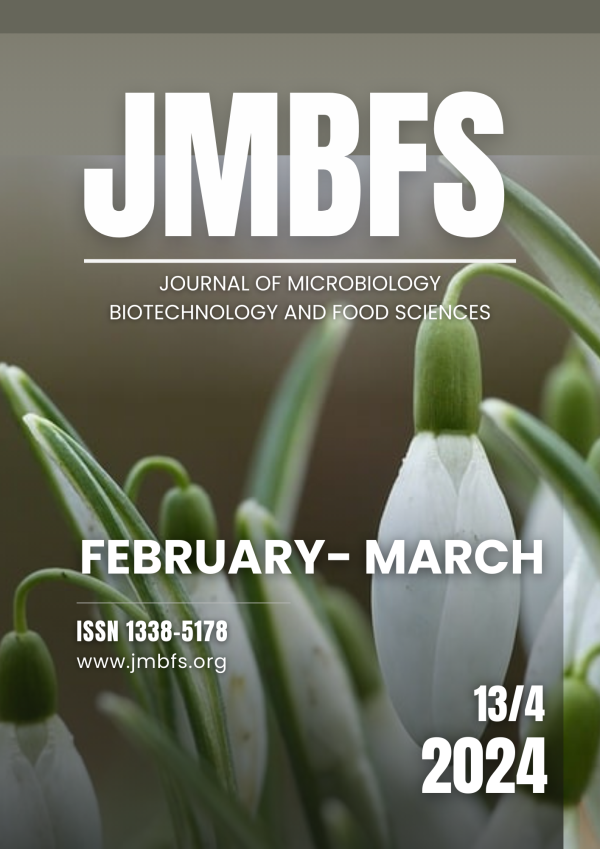IN VITRO ANTIFUNGAL EFFECT OF TWELVE ESSENTIAL OILS ON PENICILLIUM EXPANSUM GROWTH
DOI:
https://doi.org/10.55251/jmbfs.9922Keywords:
EOs, P. expansum, antifungal activity, vapour phaseAbstract
The questionable safety of food spoiled by microorganisms is and should be the subject of attention and investigation. Pathogens such as Penicillium expansum are more difficult to control due to their resistance and ubiquity. Awareness of plant essential oils (EOs) as alternative natural preservatives is increasing because of their significant antimicrobial activity. The aim of this research work was therefore to contribute to this topic with new results. The antifungal activity of twelve EOs was tested in vitro against five strains of Penicillium expansum, using the vapour-phase diffusion method. Three EOs, from bergamot, star anise and rosaline, inhibited colony growth during two-week cultivation with a partial efficacy, all other EOs showed complete (100%) inhibitory activity at a concentration of 625 μL.L-1. These (EOs from clove, cinnamon, cinnamon bark, laurel, lemongrass, peppermint, Mitcham mint, spearmint, and lavender) were included in the second part of the trial, the aim of which was to determine their minimum inhibitory doses (MIDs). In the case of peppermint, Mitcham mint, spearmint and lavender EOs, some strains of P. expansum grew already at a concentration of 500 μL.L-1. Clove EO stopped the fungal growth of two strains at 250 μL.L-1. Laurel EO was 100% effective at MID 250 μL.L-1 throughout the cultivation period. EOs from lemongrass and cinnamon bark had similar efficacy on the strains. Both EOs were able to inhibit one strain at a MID of 125 μL.L-1, cinnamon bark EO inhibited the remaining strains at 250 μL.L-1, lemongrass EO inhibited three strains at 250 μL.L-1 and one at 500 μL.L-1. The lowest MID was recorded for cinnamon EO, which effectively inhibited two strains at 125 μL.L-1, two strains at 62.5 μL.L-1 and one strain even at 31.25 μL.L-1. The sensitivity of the strains used in this study varied according to the EOs used.
Downloads
Downloads
Published
How to Cite
Issue
Section
License
Copyright (c) 2023 Monika Mrvová, Zuzana Barboráková, Zuzana Mašková, Juraj Medo, Jana Štefániková, Dana Tančinová

This work is licensed under a Creative Commons Attribution 4.0 International License.
All papers published in the Journal of Microbiology, Biotechnology and Food Sciences are published under a CC-BY licence (CC-BY 4.0). Published materials can be shared (copy and redistribute the material in any medium or format) and adapted (remix, transform, and build upon the material for any purpose, even commercially) with specifying the author(s).





